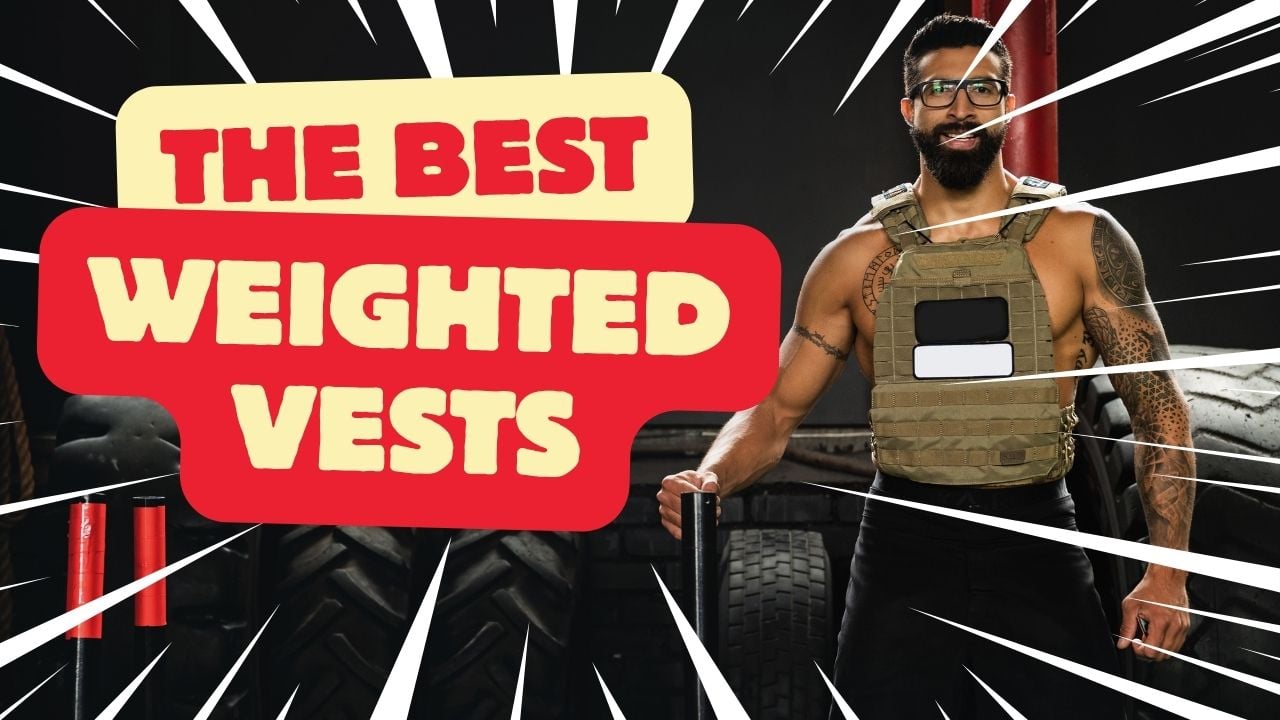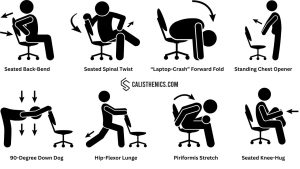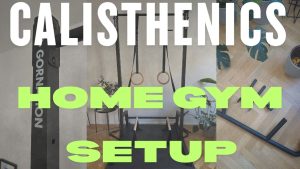As someone who trains calisthenics seriously, I’ve always preferred using a dip belt for weighted pull-ups and dips. It’s more practical when you want to load heavy—20, 30, even 40 kg or more—and it doesn’t get in the way of your range of motion. Weighted vests, on the other hand, come with some limitations. They’re bulkier, restrict certain movements, and usually top out at much lighter loads. So I wouldn’t reach for one when my goal is to build maximum strength on basic compound movements.
That said, they still have their place in training.
I’ve used weighted vests in situations where a dip belt just doesn’t work—like during push-ups, handstand work, or when training outdoors without easy access to weights. They also come in handy for adding low-impact intensity to things like walking, hiking, or bodyweight circuits. And for anyone who’s not yet doing heavy weighted calisthenics, vests can be a solid stepping stone to progress from high reps to more strength-focused work.
In this article, I’ll walk you through the different types of weighted vests out there and how to pick the right one based on your goals. I’ll also recommend specific models that I (and some of the athletes I coach) have tried for:
- Calisthenics and strength training
- Walking, hiking, and rucking
- Running and plyometrics
- Options that fit women’s bodies more comfortably
The goal isn’t to sell you on something you don’t need—but if you’re considering adding a vest to your training, this guide will help you make a smart choice based on real use, not marketing hype.
Best Weighted Vests for Calisthenics and Strength Training
If your main goal is building strength with calisthenics, the first thing I’ll say is this: a dip belt is still my go-to for heavy work like weighted pull-ups and dips. You can stack plates or hang a kettlebell, and it won’t interfere with your movement the way a vest can. That said, a good weighted vest has its own place, especially for exercises where you can’t use a belt, or when you want to keep the load more balanced across your body.
For strength-focused calisthenics, I’d consider a vest that goes up to 20kg (around 40–45lbs). Yes, there are vests that go all the way to 29kg or 65lbs, but in my experience they’re bulky, uncomfortable, and not really practical for everyday use—especially if you’re doing dynamic movements or want to maintain clean form. Twenty kilos is more than enough to seriously challenge most athletes for high-rep sets or advanced variations.
What to Look for in a Strength Training Vest
If you’re buying a vest primarily for calisthenics strength work, here are a few things I’d pay attention to:
- Weight distribution: You want a snug, close-to-body fit so the weight doesn’t shift around. That’s especially important for exercises like handstand push-ups or pistol squats.
- Compact design: If the vest is too long, it will restrict your range of motion—especially at the hips and shoulders.
- Chest clearance: For push-ups, you need some space at the chest or a design that allows you to get full depth, especially if you’re using parallettes.
- Adjustability: A good vest lets you add or remove weight in small increments, so you can progress gradually over time.
Best Exercises with Weighted Vests
These are the movements where I find a weighted vest most useful:
- Handstand push-ups: The weight adds serious intensity, and it’s evenly distributed which helps with balance.
- Pull-ups and chin-ups: A vest works well for moderate loads when you want to keep the setup simple.
- Push-ups (on parallettes): You can go deep if the vest leaves space at the chest, and the added load makes even high reps feel challenging.
- Bodyweight squats, split squats, and pistol squats: Perfect for adding resistance while keeping your hands free and your movement natural.
My Top Picks
If you’re looking for an all-in-one weighted vest that’s ready to go out of the box, these are the two I recommend based on personal use and feedback from athletes I coach:
🔹 Eric Flag Adjustable Weighted Vest (20kg / 40lbs)
![Best Weighted Vests [2025] 1 eric flag adjustable weighted vest](https://calisthenics.com/wp-content/uploads/2025/07/eric-flag-adjustable-weighted-vest.jpg)
🛒 Buy it on Amazon ▶️
👉 Amazon always has good deals on this vest💰 Current price is $179.99 including weights
This is my top pick overall. It’s compact, distributes weight evenly, and feels stable during movement. It comes with the full 20kg of weights included, which makes it a great deal for the price.
- For more info check out my review of the Eric Flag Weighted Vest
🔹 Gornation Elite Weighted Vest
![Best Weighted Vests [2025] 2 elite weight vest 20kg](https://calisthenics.com/wp-content/uploads/2024/09/elite-weight-vest-20kg.png)
🛒 Buy the 44lbs/20kg version on GORNATION ▶️
🛒 Buy the 22lbs/10kg version on GORNATION ▶️
👉 The 44 pound/20kg version costs: $163, while the 22 pound/10kg version goes for $109. Remember, you can always get 10% off with the discount code CS10 on anything at Gornation (Shipping is best suited for Europe & UK).
If you’re based in Europe or the UK, this is another excellent choice. Slightly more low-profile than the Eric Flag vest, and it’s well-made with good weight distribution. Just be aware that shipping to the US isn’t cost-effective right now due to customs fees.
- For more info about the Gornation Elite Weighted Vest and my review, check out the product page.
These are both solid, durable options that strike the right balance between comfort, load, and performance. They’re perfect if you want a practical way to level up your calisthenics without needing extra equipment like a belt, plates, or a gym setup.
Best Weighted Vests for Walking, Hiking, and Rucking
Weighted walking and hiking (sometimes called “rucking”) is one of the simplest ways to make your daily movement more effective. You don’t need to overhaul your training routine—just throw on a vest and go for your usual walk. It boosts your heart rate slightly, increases the load on your legs and core, and can even improve posture and bone density over time. I know several people who’ve built serious cardiovascular and muscular endurance just by adding a vest to their walks.
But the key here is comfort and fit. When you’re walking for 30–60 minutes or longer, sometimes uphill or on uneven terrain, a vest that digs into your shoulders or shifts around with every step will ruin the experience—and probably your motivation.
What to Look for in a Weighted Vest for Walking & Hiking
If your main use is walking or hiking, these are the features I’d focus on:
- Breathable material: You’ll heat up quickly, especially on longer walks. A vest with mesh or ventilated padding helps prevent that “overheated backpack” feel.
- Comfortable shoulder straps: This is the most important factor for long-term wear. Look for wide, padded straps that spread the load evenly.
- Snug fit with adjustability: The vest should stay close to your body and not bounce around. Chest and waist straps that you can tighten make a big difference.
- Even weight distribution: You want the weight to feel balanced from front to back, not hanging too low or pulling backward like a backpack.
- Storage pockets (optional): Some people like having a phone or key pocket. It’s not essential, but can be a nice bonus on longer walks.
- Ease of use: If you’re putting this on several times a week, small things like the buckle design or how fast you can adjust the straps start to matter.
How Heavy Should You Go?
For most people, 10–20 lbs (4.5–9 kg) is more than enough for walking and hiking. If you’re doing flat, short walks and want to increase intensity, start on the lighter end and build up slowly. For uphill or longer hikes, I personally wouldn’t go over 15–20 lbs unless you’re already conditioned to carry loads (like military rucking or backpacking).
Best Vests for Walking and Hiking
The vests I mentioned earlier for general use—like the ▶️ Eric Flag and ▶️ Gornation Elite lighter version—can work for walking too, especially if you’re doing a mix of strength and cardio in your week. But if you’re purely looking for something for low-impact walking or hiking, these features matter even more, and you might want something lighter, more breathable, and tailored to endurance-style wear.
At the moment, I’m still testing a few options specifically for this category, but based on feedback from others in the community and from athletes I coach, the key is to avoid anything bulky or rigid—go for compact, well-padded, and breathable designs.
A few tips based on experience:
- Don’t choose the heaviest version just because it’s available. Start light and get used to the movement first.
- If you live in a hot climate, prioritize airflow and avoid full-body or wraparound styles that trap heat.
- For longer hikes, hydration and snacks matter more than extra pounds—sometimes it’s better to carry less weight and go farther.
Best Weighted Vests for Women: What to Know Before You Buy
When it comes to weighted vests, most models are still designed with a unisex or male body shape in mind—which can be a problem. If you’re a woman looking to train with a vest, comfort, fit, and weight distribution become even more important, especially for exercises involving impact, range of motion, or pressure around the chest.
Over the years I’ve coached several women in calisthenics and general strength training, and the feedback has been pretty consistent: many traditional vests either sit too low, dig into the shoulders, or press uncomfortably across the chest, especially during dynamic movement. So if you’re looking to add a vest to your setup, here’s what to consider.
Key Considerations for Women
- Chest clearance and comfort: Look for designs that avoid pressure directly over the chest area. Vests with a slightly higher cut, or those designed specifically for women, tend to perform better.
- Shoulder padding: Women typically have narrower shoulders, so good padding and adjustability make a big difference in comfort.
- Overall weight: Most women I work with start with lighter vests (10–20 lbs) and only increase once they’ve adapted. Heavier isn’t always better—especially if you’re doing running, jumping, or high-rep bodyweight work.
- Workout style: Are you primarily doing strength training, cardio, or a mix? Your training will influence whether you go with a compact, form-fitting vest or a more rigid plate carrier.
Best Weighted Vests for Women
🔸 Zelus Weighted Vest (Best Overall for Women)
![Best Weighted Vests [2025] 3 zelus weighted vest for women](https://calisthenics.com/wp-content/uploads/2025/07/zelus-weighted-vest-for-women.jpg)
🛒 Buy it on Amazon ▶️
👉 The 20 lbs version costs around $60 (If you’re doing running or jumping, go with this or one of the lighter options.)
This is the most comfortable and practical option for most women, especially if you’re doing a mix of bodyweight exercises, cardio, or plyometric work. It’s compact, stays close to the body, and doesn’t feel bulky. It’s also one of the best values out there.
It’s a great all-rounder, and several female athletes I’ve worked with prefer it over bulkier block-style vests. It holds up well even during movement-heavy workouts.
🔸 MIR Weighted Vest for Women (Best Adjustable Option)
![Best Weighted Vests [2025] 4 mir weighted vest for women](https://calisthenics.com/wp-content/uploads/2025/07/mir-weighted-vest-for-women.jpg)
🛒 Buy it on Amazon ▶️
👉 The 20 lbs version is just under $100 You can also go up to 50 lbs if your training calls for it.
If you’re looking for something heavier or more customizable, the MIR Women’s Weighted Vest is a solid pick. It’s one of the few vests out there that’s actually shaped with women in mind—shorter torso, better weight distribution, and a more secure fit.
- For more details and my opinion on it you can always check out the MIR Weighted Vest product page
It’s a bit more expensive, but worth it if you want more loading options or a more tailored fit for strength work.
🔸 Plate Carrier Vests (Only for Specific Use Cases)
If your workouts are more static or strength-based (think pull-ups, squats, push-ups—not much jumping or running), you could also go with a plate carrier–style vest I mentioned before. Just make sure to pair it with curved plates that fit your torso better.
- I recommend the curved ergonomic plates from Wolf Tactical which you can pair it with the Wolf Tactical Vest or the 5.11 TacTec one (Amazon).
These fit into most standard plate carrier vests and feel way better than the flat options, especially for women. Just remember: this setup adds up in cost quickly, and it’s not ideal for fast-paced or impact-heavy training.
Best Plate Carrier–Style Weighted Vests
If you’ve ever watched a CrossFit competition like the CrossFit Games, you’ve probably seen athletes grinding through workouts in military-style weighted vests. These are plate carrier vests—originally designed for tactical use, but now popular in functional fitness, CrossFit, and even calisthenics for certain styles of training.
They’re a bit different from the more traditional weighted vests we talked about earlier. Instead of using small weight blocks, plate carrier vests use flat steel or cast iron plates, typically inserted in the front and back. That creates a more realistic load distribution (like wearing a backpack front and back), but it also changes how the vest feels during movement—especially during dynamic or cardio-heavy workouts.
When Does a Plate Carrier Make Sense?
I wouldn’t use this type of vest for basic strength work like heavy pull-ups or static holds. The weight options are more limited, and the rigid structure isn’t ideal for fine-tuning resistance. But for conditioning workouts, bodyweight circuits, high-rep calisthenics, or Murph-style training (pull-ups, push-ups, squats, and running), these vests actually work great. They’re also a solid option if you like the military or tactical aesthetic and want something with a really secure, tight fit.
What You Need to Know Before Buying
The main thing to understand is that these vests usually come without plates—you’ll have to buy those separately, which adds to the total cost.
- Most plates cost upwards of $100, depending on the weight.
- You can choose between flat and curved plates.
- The curved plates like these (Amazon) tend to be more comfortable and ergonomic, especially for women or smaller athletes.
- The flat plates like these (Amazon) work well for most men and offer a simple, affordable starting point.
So while the vest itself might cost $150–$200, once you add plates you’re looking at $250+ total. It’s a bigger investment—but if you’re serious about this style of training, it can be worth it.
My Top Picks for Plate Carrier Weighted Vests
🔸 5.11 TacTec Tactical Weighted Vest
![Best Weighted Vests [2025] 5 5 11 weight vest](https://calisthenics.com/wp-content/uploads/2025/07/5-11-weight-vest.jpg)
🛒 Buy it on Amazon ▶️ (currently just under $200)
This is the gold standard for plate carrier vests and the one I recommend if you’re going all-in. It’s durable, has excellent weight distribution, and is used in official CrossFit competitions for a reason—it just works.
- Or check out my 5.11 TacTec Vest review.
▶️ Rogue Fitness also occasionally runs promotions on the 5.11 TacTec vest. Worth checking their store.
🔸 Wolf Tactical Weighted Vest
![Best Weighted Vests [2025] 6 wolf tactical weighted vest](https://calisthenics.com/wp-content/uploads/2025/07/wolf-tactical-weighted-vest.jpg)
🛒 Buy it on Amazon ▶️ (currently just under $160)
If you’re looking for a more budget-friendly alternative with a similar feel, Wolf Tactical makes a solid plate carrier that’s currently on sale for under $160.
- My full opinion and review of the Wolf Tactical Vest.
It’s not quite at the same build quality level as the 5.11 TacTec, but for the price, it’s a great option—especially if you’re just getting into this type of training and want to test the waters before investing in premium gear.
Best Weighted Vests for Running, Plyometric Training, and Jumping
Let me be upfront here—I generally don’t recommend heavy weighted vests for running or jumping-based workouts. There are a few good reasons for that.
First, the risk-to-reward ratio just isn’t great. When you’re doing explosive movements—like jump squats, box jumps, sprints, or even bounding footwork drills—adding too much load can quickly lead to joint stress, especially at the knees, ankles, and lower back. And when you start adding vertical or lateral force under fatigue, a shifting or bouncing vest only increases the chance of bad landings or overuse issues.
Second, heavier vests restrict your natural movement. They change your center of gravity and can mess with your running gait or jumping mechanics. And from experience, most people aren’t getting stronger or faster by strapping 20 kg to their chest and trying to jump around with it.
If You Really Want to Train With a Vest…
That said, if you’re experienced, injury-free, and understand the limitations, a lightweight vest can still be useful. Think of it as adding just a bit of resistance to sharpen intensity—not turning your sprint session into a grind.
For that purpose, I’d keep the vest under 10 kg (about 22 lbs)—ideally closer to 5–8 kg for running and jumping. The goal is to add resistance without drastically changing your form.
My Recommended Lightweight Vests for Running
If you’re looking for something that can handle dynamic work but still stays comfortable and secure, here are the two I’d recommend:
🔹 Zelus Weighted Vest (20lbs/10kg Version)
This is a solid entry-level vest for both men and women. It fits close to the body, the shoulder straps are comfortable even during higher-impact sessions, and the profile is compact enough for full range of motion during sprints or jumps.
It’s not flashy, but it gets the job done. If you’re mixing in short sprints, agility drills, or a few jump squats during a circuit, it’s a safe pick.
🔹 Gornation Elite Weighted Vest (20lbs/10kg Version)
This one’s a bit more premium, and if you’re training regularly, it’s worth the extra investment. The fit is tight and adjustable, it moves well with your body, and the materials are high quality. I’ve used it for lighter plyo work and conditioning circuits and found it comfortable even under higher intensity.
Just go with the 20 pound /10 kg setup, and skip the heavier options for this type of training. You’ll get all the benefits without overloading your joints.
A Note on Sweat and Heat
There’s no way around it—you will sweat under any weighted vest, especially during running or high-rep jumping workouts. Vests trap heat against your torso, and even the best breathable designs can’t eliminate that. In hot weather or during longer sessions, it’s something you just have to accept. If you’re outdoors, try to train in the early morning or late evening when temps are lower, and wear a moisture-wicking shirt underneath.
Final Thoughts: Are Weighted Vests Worth It?
Weighted vests aren’t a must-have for everyone—but when used intentionally, they’re one of the most versatile tools in calisthenics and functional fitness. I don’t use mine for everything—I still prefer a dip belt for heavy pull-ups and dips—but for movements like push-ups, squats, handstand work, or loaded walks, a good vest adds just the right amount of challenge without needing a full gym setup.
The key is choosing the right style of vest for your specific goals. If you’re chasing strength gains with clean technique, go for something snug and adjustable up to 45 pounds/20 kg. If you’re using it for walking, hiking, or endurance circuits, prioritize comfort and breathability. And if you’re a woman or smaller athlete, look for a vest with better weight distribution and ergonomic design.
🗂️ Weighted Vest Recommendations Summary
| Best for | Vest name | Key features |
|---|---|---|
| Strength Training / Calisthenics | Eric Flag Weighted Vest (20kg) | Compact, balanced design with up to 20kg load, great for push-ups, pull-ups, pistol squats, and handstand work |
| Strength Training / Calisthenics | Gornation Elite Weighted Vest (20kg) | Adjustable up to 20kg, secure fit, premium materials, ideal for calisthenics strength progressions |
| CrossFit / Tactical / High-Intensity | 5.11 TacTec Plate Carrier Vest | Durable tactical design, ultra-secure fit, used in CrossFit Games, requires separate weight plates |
| CrossFit / Tactical / High-Intensity | Wolf Tactical Plate Carrier Vest | Affordable alternative to 5.11, similar feel and style, good for CrossFit-style WODs, plates sold separately |
| Walking / Hiking / Rucking | Eric Flag Weighted Vest (20kg) | Breathable, adjustable fit, wide padded straps, evenly distributed weight, suitable for long walks and hikes |
| Walking / Hiking / Rucking | Gornation Elite Weighted Vest (20kg) | Comfortable shoulder padding, adjustable, good airflow, reliable for rucking and endurance walks |
| Running / Plyometric / Jump Training | Zelus Weighted Vest (10kg) | Lightweight, secure fit, affordable, allows full range of motion, good for sprints, jump squats, and HIIT |
| Running / Plyometric / Jump Training | Gornation Elite Weighted Vest (10kg) | Close-to-body fit, excellent mobility, great for dynamic training and shorter cardio sessions |
| Women – All-Around Use | Zelus Weighted Vest (10kg) | Budget-friendly, compact design, comfortable for women, ideal for bodyweight circuits and light cardio |
| Women – Strength Training | MIR Weighted Vest for Women | Shaped for female athletes, well-padded, goes up to 50 lbs, great for progressive strength training |
| Women – Plate Carrier Option | 5.11 TacTec or Wolf Tactical | For better ergonomic fit for women pair it with curved weight plates (Amazon) |




